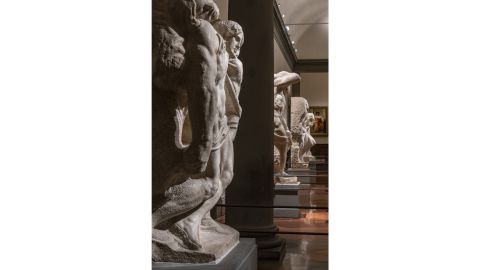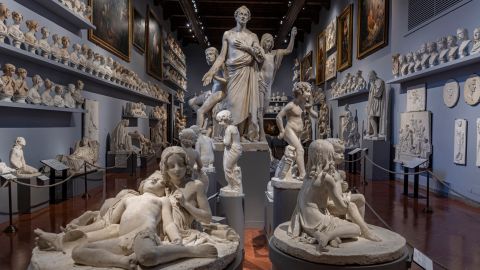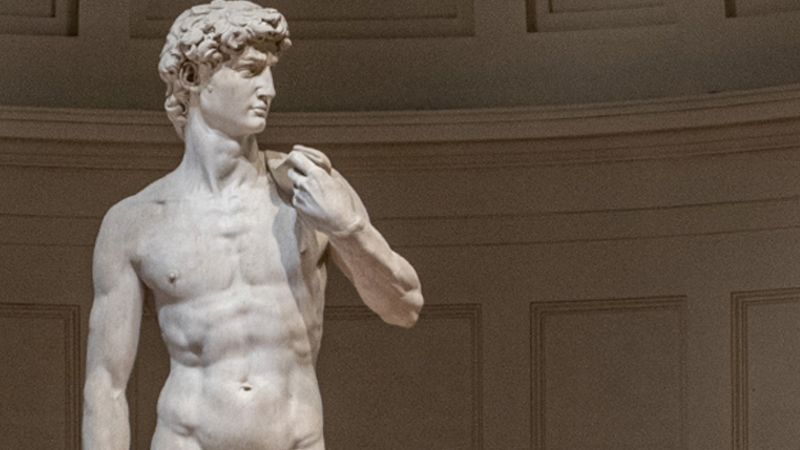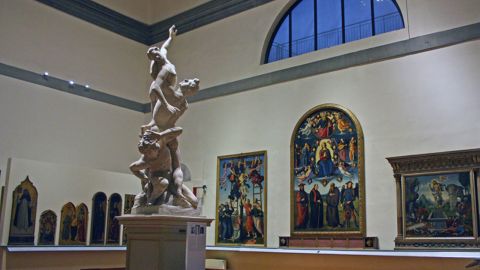Editor’s Note: Sign up to CNN Travel’s free nine-part Unlocking Italy newsletter for insider intel on Italy’s best loved destinations and lesser-known regions to plan your ultimate trip. Plus, we’ll get you in the mood before you go with movie suggestions, reading lists and recipes from Stanley Tucci.
CNN
—
For over 500 years, Michelangelo’s sculpture of David in Florence has stood unchanged, the marble icon of masculinity, and one of the world’s most famous works of art.
But as Italy emerges from the pandemic, the David has got a whole new look.
A new lighting system has revolutionized how the famous statue looks, with small details visible for the first time in its history.
“A few days ago, I noticed muscles on the body that I’d never seen before,” says Lucia Lazic, a guide who visits the Accademia Gallery most days.
“I said, ‘What on earth? How have I never seen this?’ The lighting is much better on the David.”
Cecilie Hollberg, director of the Accademia, said in a statement that the lighting has “changed the visual perception of the artworks,” telling CNN that the David’s marble looks “whiter” and that the details are “more visible.”
The lighting – completed in September as part of works that were unveiled this week – aimed to bring the “dynamism of sunlight” into the Tribuna room where the statue is kept under a domed skylight.
LED spotlights were installed in a circle above the statue, allowing them to “completely envelop the David and leave the rest of the space in the background.”
The color of the light changes imperceptibly during the day, while the spotlights are of varying warmth, allowing visitors to get a new perspective with every step around the statue.
‘You can see every chisel mark’

The new-look David is part of a wider revamp of the museum, which was Italy’s second most visited in 2019.
The Galleria dei Prigioni, or “prisoners corridor” – named after Michelangelo’s four semi-finished sculptures of prisoners of war, which share the space with two of his other works – has also had its lighting switched up, with several spotlights pointed on each sculpture.
“It used to be that the prisoners looked yellow, and David was white. Now they’re the same color,” Hollberg told CNN.
“You can now see every chisel mark on them.”
The new lighting system, which “restores the right balance of chiaroscuro and color to the works,” is also energy-efficient. Hollberg says the gallery should use around 80% less electricity than in previous years.
It’s not just the headline works that are looking different. Several of the other rooms of the gallery have had their previously beige walls painted in colors that maximize those in the paintings.
The Sala del Colosso, the gallery’s first room, is now a bright blue, while the 13th and 14th-century rooms are a pale green, chosen to bring out the gold used in most of the paintings.
And the new lighting everywhere has transformed the paintings from things tourists used to rush past en route to David, to unmissable in their own right.
“One regular visitor said, ‘Where was all this detail? We never saw it,’” Hollberg told CNN. “In one painting by Domenico Ghirlandaio you can now see all the gold dots in the [saints’] halos. Before, the beige walls flattened the gold. In another, it feels like you could pluck the pearls from the painting – before you couldn’t see them at all.
“My job is to give value and visibility to all the works. Every single work here is a masterpiece, but works die on a beige background – they need to be lifted and supported by color. I want to give them what they deserve.”
Changing behavior

In the past, the lighting was so bad that some paintings were barely visible – like those beside the David. “Before it was all dark, you couldn’t see them – no one stopped,” said Hollberg. One time she saw a guide shining their phone torch on another painting in a bid to show it to visitors.
Tourists have already changed their behavior, she said.
“Now they stop and look. They’re not all in front of the David like before. I’ve followed groups, and they used to cut through the Sala del Colosso and never stop. Now I see that room full of visitors – it’s redistributing the crowds.”
Lazic, a guide with Elite Italian Experience, agrees: “There are more people stopping in the Sala del Colosso.”
The renovations, which started just before the pandemic and which have been rolled out this year, have finished with the revamp of the Gipsoteca. The plaster cast gallery was another rush-through place. That’s if it was open – with no open windows or air conditioning, it used to close at midday during the summer.
But now with air conditioning, powder blue walls and a new layout for the 414 plaster casts – mostly done by sculptor Lorenzo Bartolini, whose works are found in the Louvre, Amsterdam’s Rijksmuseum and the Metropolitan Museum of Art – it’s a place to linger.
Hollberg says that locals are starting to appreciate the museum, too. “Before it was a space for tourists, but Florentines are rediscovering it. We got the last resisters in with a concert series.”
Dario Franceschini, Italy’s minister of culture, called the reopening of the Gipsoteca “an important step… in bringing [the Accademia] into the 21st century.”
He added: “The works across the entire building have allowed significant innovations in the systems, transforming a museum conceived in the late 19th century into a modern venue without distorting it.”




